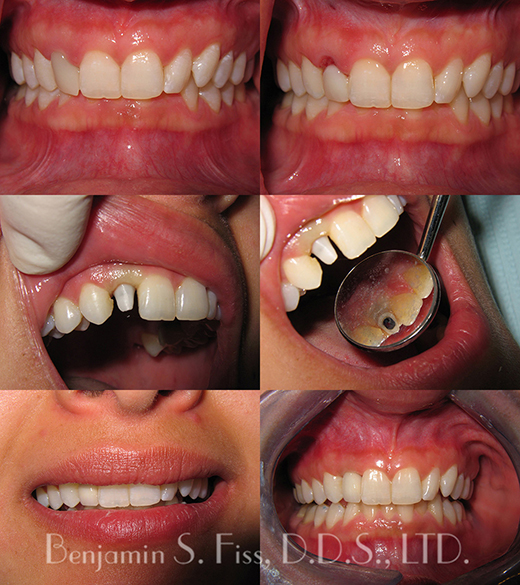3 Easy Facts About Dental Sense Described
Table of ContentsThings about Dental SenseUnknown Facts About Dental SenseDental Sense Can Be Fun For Everyone8 Simple Techniques For Dental Sense
are medical devices surgically dental implanted right into the jaw to bring back a person's capacity to chew or their appearance. They offer support for man-made (phony) teeth, such as crowns, bridges, or dentures. When a tooth is lost because of injury or illness, an individual can experience complications such as quick bone loss, faulty speech, or adjustments to chewing patterns that lead to discomfort.Dental dental implant systems are composed of an oral implant body and dental implant abutment and may additionally consist of an abutment fixation screw. Wisdom tooth cavity. The dental implant body is surgically put in the jawbone in place of the tooth's origin. The dental implant joint is usually affixed to the implant body by the joint addiction screw and extends via gums right into the mouth to sustain the affixed synthetic teeth
(https://share.evernote.com/note/12f780ae-8ad1-693d-87b6-b9c57ca5907c)Framework of The Dental Implant System selecting dental implants, talk with your oral supplier regarding the prospective advantages and threats, and whether you are a candidate for the procedure. Things to think about: Your general health and wellness is an essential consider identifying whether you are a good prospect for dental implants, how much time it will certainly take to recover, and how much time the implant might stay in area.
Cigarette smoking may influence the healing process and reduce the long-term success of the dental implant. The healing procedure for the implant body might take a number of months or longer, during which time you usually have a temporary joint instead of the tooth. the oral implant procedure: Meticulously comply with the dental hygiene guidelines offered to you by your oral service provider.
The Only Guide to Dental Sense
Implant failure can lead to the demand for another procedure to deal with or change the implant system. Restores the capability to eat Restores cosmetic appearance Helps maintain the jawbone from reducing as a result of bone loss Protects the health and wellness of the bordering bone and gums Helps keep nearby (neighboring) teeth secure Boosts lifestyle Damage to surrounding natural teeth during implant placement Injury to the surrounding tissues during surgical treatment, such as sinus opening Injury throughout surgical procedure (for example, fracture of bordering jawbone) Inadequate function, such as feeling like the teeth do not bite together typically A sensation that the tooth is loose or twisting in position resulting from a joint screw loosening up Implant body failing (looseness of the dental implant body) because of systemic infection, which might be more probable in clients with unrestrained diabetics issues because of regional infection in bone and periodontals supporting the dental implant body because of delayed healing, which may be more most likely in people that smoke Problem cleaning up the gums around the dental implant, leading to bad oral hygiene Untreated gum illness Post-surgical tingling because of nerve impingement or damage Constantly alert wellness care suppliers and imaging service technicians that you have dental implants prior to any type of magnetic resonance imaging (MRI) or x-ray procedures.
FDA is not familiar with any type of unfavorable events reported for MRI or x-ray treatments with dental implants. Dental implants systems are normally constructed from materials that follow global consensus standards of the International Company for Standardization (ISO) or ASTM International. These requirements have information of what makes a risk-free material.

An oral implant is a structure that changes a missing out on tooth. With screw-like devices, the specialist inserts a dental implant right into the jawbone, and it acts as an anchor for a man-made tooth, called a crown. A tool called an abutment connects the synthetic tooth to the dental implant. The crown is tailor-made to fit the individual's mouth and match the shade of their teeth.
Dental Sense Can Be Fun For Everyone
Some people are not qualified for oral implant surgical treatment. It is for dental surgeons to operate on people with: acute illnessuncontrollable metabolic diseasebone or soft cells condition or infectionIf these problems are fixed, a person can have the surgical procedure. In, oral cosmetic surgeons refrain from operating individuals with: If people with any one of the above go through dental implant surgical procedure, there is a higher risk of the dental implant failing.

Oral dental implant surgical procedure is a customized procedure. It's not the very same for every person. But the following gives a general introduction of what you can anticipate your dentist, dental surgeon, periodontist or prosthodontist to do: Place the implant operatively. Offer you time to recover. Affix the blog post and last crown, bridge or denture.
Next off, your specialist will meticulously position the oral implant into your jaw. Finally, your surgeon will rearrange your periodontals and close the incision with stitches. If your implant is near the front of your mouth, your dentist will certainly make a short-lived tooth for you to use until you recover. That way, you will not have a gap in your smile while you recoup.
Dental Sense Can Be Fun For Anyone
Throughout the healing stage, your jawbone ought to fuse to the oral implant. This procedure can take anywhere from three to nine months.
When your dental implant heals, your dental professional can connect the joint (tiny connector article) and your last restoration (crown, bridge or denture). This typically takes concerning one hour to finish and might require a second minor surgical treatment. You should not really feel any pain during your oral implant treatment due to the fact that your provider will utilize medicine to numb your gum tissues.